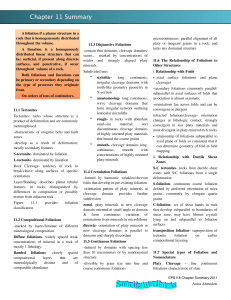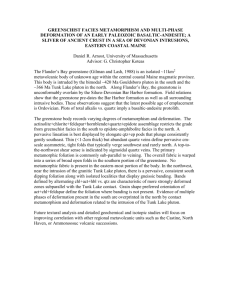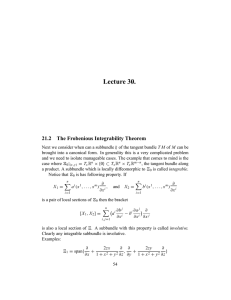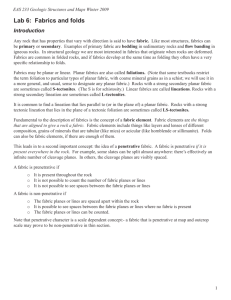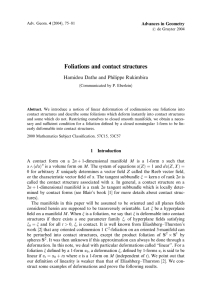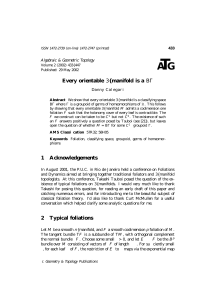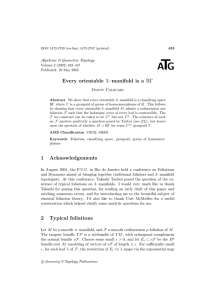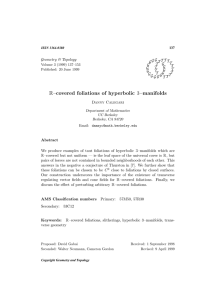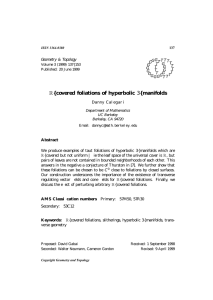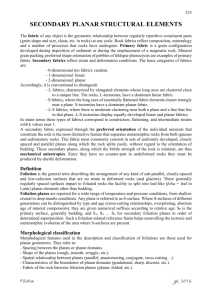Foliation and lineation
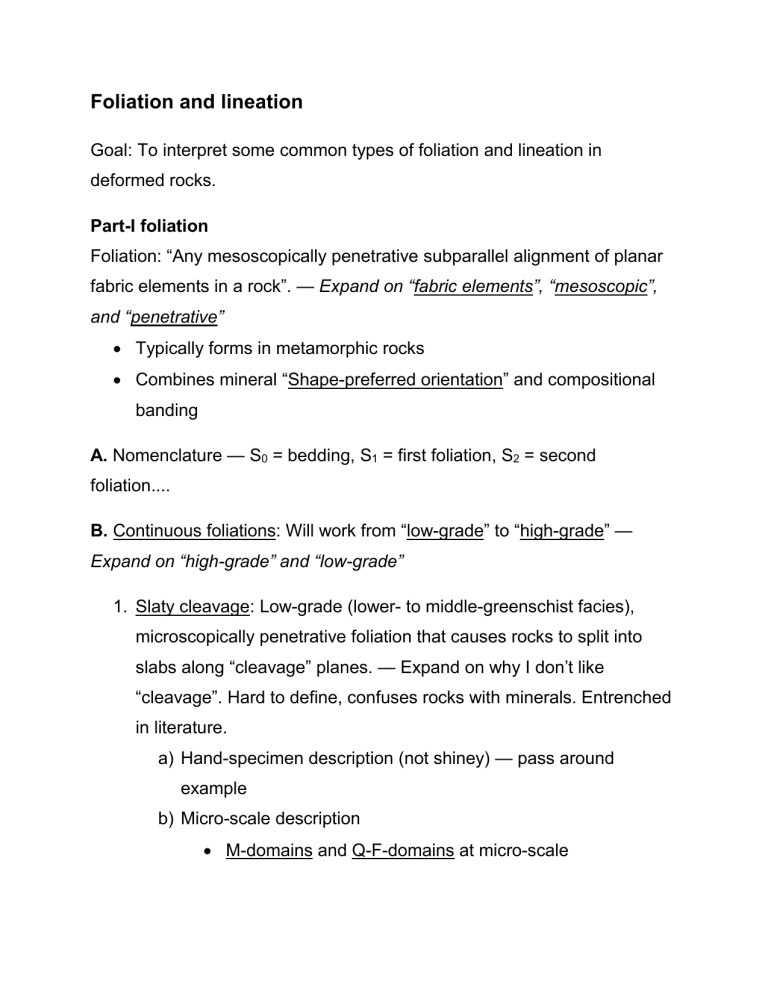
Foliation and lineation
Goal: To interpret some common types of foliation and lineation in deformed rocks.
Part-I foliation
Foliation : “Any mesoscopically penetrative subparallel alignment of planar fabric elements in a rock”. — Expand on “fabric elements”, “mesoscopic”, and “penetrative”
Typically forms in metamorphic rocks
Combines mineral “Shape-preferred orientation” and compositional banding
A.
Nomenclature — S
0
= bedding, S
1
= first foliation, S
2
= second foliation....
B.
Continuous foliations: Will w ork from “low-grade” to “high-grade” —
Expand on “high-grade” and “low-grade”
1. Slaty cleavage: Low-grade (lower- to middle-greenschist facies), microscopically penetrative foliation that causes rocks to split into slabs along “cleavage” planes. — Expand on why I don’t like
“cleavage”. Hard to define, confuses rocks with minerals. Entrenched in literature. a) Hand-specimen description (not shiney) — pass around example b) Micro-scale description
M-domains and Q-F-domains at micro-scale
Roles of pressure-solution/reprecipitation and rotation in forming slaty cleavage — Enormous volume loss in slates
2. Phyllitic cleavage/foliation (in book): Higher-grade version of slate
(middle- to upper-greenschist-facies conditions).
Hand-specimen description: Shiney, still cannot make out individual mineral grains with naked eye. Pass around example
3. Schistose foliation: Penetrative foliation in which individual mineral grains are visible. (upper-greenschist facies to lower-amphibolite facies)
May also be able to see M-domains and Q-F-domains with naked eye.
May contain large metamorphic minerals (garnet, staurolite, Alsilicates, ect.)
Metamorphic reactions play an important role in growing aligned minerals
4. Gneissic foliation: Shape-preferred alignment of medium- to coarsegrained minerals accompanied by compositional banding. (middleamphibolite facies to granulite facies)
Requires compositional segregation... not fully understood
Pre-existing sedimentary
Metamorphic/igneous segregation
C.
Discontinuous foliations (Disjunctive foliations): Mesoscopically visible, unfoliated domains between individual foliation surfaces.
1. Spaced cleavage: Array of anastomosing, fracture-like partings that are often occupied by clay minerals or carbonaceous material
(graphite). Generally weak deformation at low-grades.
2. Crenulation cleavage: Forms by mm- to cm-scale folding of a preexisting continuous foliation. Significant in that it marks a second phase of deformation with different stress-axes!!
As pre-existing foliation is rotated into the limbs of micro-folds, pressure solution preferentially removes Q-F-domains in limbs of these folds, leaving new, concentrated M-domains.
Part-II lineation
Lineation: Subparallel alignment of elongate, linear fabric elements in a deformed rock.
A.
Nomenclature — L
1
= first lineation, L
2
= second lineation....
B.
Elongation lineations: Always in the plane of foliation. Define one of the principal axes along which the rock was “stretched”.
1. Mineral lineations: Preferred alignment of tabular or acicular (needle- or splinter-shaped) mineral grains. Not always a true elongation lineation!!!
2. Elongated clasts: Can include cobbles, pebbles, sand grains, breccia clasts, ect.
3. Rodded quartz: Quartz grains that have been elongated into rod or blade shapes.
C.
Intersection lineations: Form due to the intersection of two planar fabric elements (e.g. S
0
and S
1
, S
1
and S
2
....).
Nomenclature — L
0x1
= S
0
crossed by S
1
, L
1x2
= S
1
crossed by S
2
....
D.
Other linear elements
1. Boudinage: Forms due to competency contrast between two layers.
Stronger layer is pulled apart into sausage-shaped pods.
2. Mullion structure: Also forms due to competency contrast. Very low wavelength folds with “mullion” pointing outwards towards less competent layer.
3. Fold hinge lines: Lines of maximum curvature on folded surface
4. Slickenlines: Grooves or fibers that form on a fault surface. Give direction of fault slip.

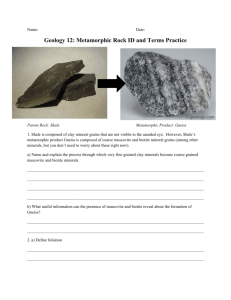
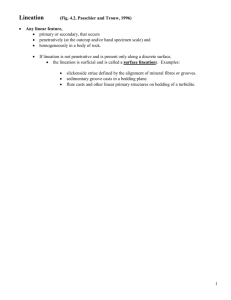
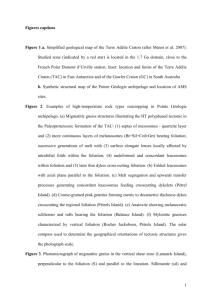
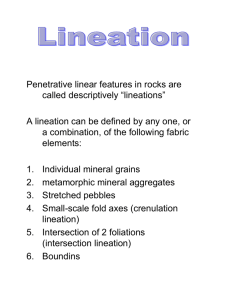
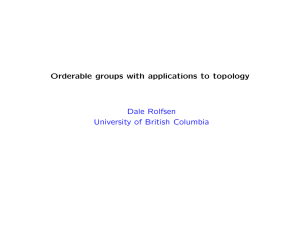
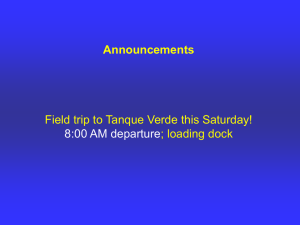
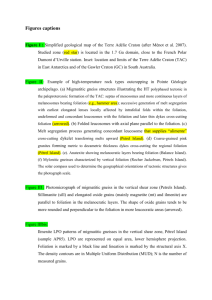
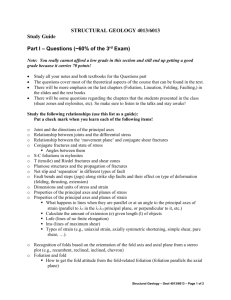
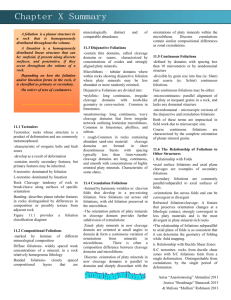
![[[1]] Camp Thibet [Tibet] frontier Sikkim Himal Sept[ember] 30/ [18]49](http://s3.studylib.net/store/data/007477943_1-22e12d1840789f6a2bf4212df464a714-300x300.png)

